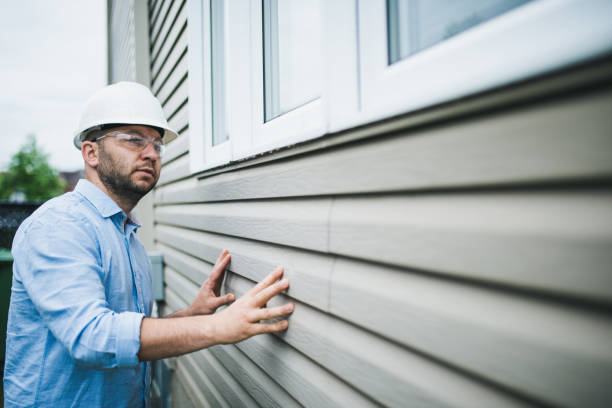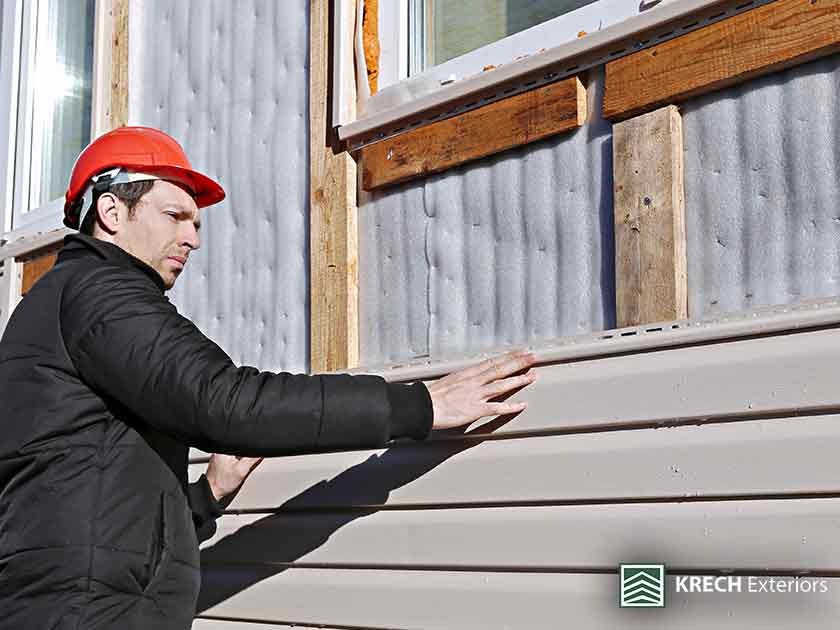Reliable Morris Siding Contractor for High-Quality Home Exterior Solutions
Reliable Morris Siding Contractor for High-Quality Home Exterior Solutions
Blog Article
The Necessary Guide to the Numerous Sorts Of Exterior Siding and Their One-of-a-kind Advantages
In the world of home renovation, picking the right house siding is a crucial choice that influences both aesthetic appeal and functional efficiency. The variety of products readily available, such as timber, vinyl, fiber steel, brick, and cement, each deal special advantages that provide to various needs and choices. Comprehending these differences can dramatically enhance the long life and value of a property - morris siding contractor. Nonetheless, with a lot of options to take into consideration, which home siding material really sticks out for your particular task? Checking out these selections can result in notified choices that align with both design and practicality.
Timber House Siding
Wood exterior siding, a preferred choice for household outsides, offers a timeless aesthetic that combines natural beauty with architectural integrity. This home siding product is readily available in numerous styles, consisting of clapboard, shingles, and board-and-batten, permitting property owners to tailor their appearance to match their style choices. Wood siding is normally crafted from resilient species such as cedar, redwood, or ache, which are recognized for their durability and ability to hold up against environmental stress factors.
One of the key benefits of timber home siding is its exceptional insulation residential properties, which can add to power efficiency and lower home heating costs. In addition, timber exterior siding is biodegradable, making it an ecologically pleasant option when sourced sustainably. Routine upkeep, including painting or discoloration, can prolong its life expectancy and boost its look, allowing house owners to preserve the natural appeal of the timber.
However, potential disadvantages consist of susceptibility to bugs, rot, and climate damage, necessitating sufficient therapy and upkeep - morris siding contractor. Despite these concerns, when effectively cared for, wood home siding can give a beautiful and resilient solution that enhances the character of a home while providing a warm, inviting environment

Plastic Home Siding
Vinyl home siding has arised as a leading choice for home owners seeking a low-maintenance outside choice that incorporates toughness and affordability. This flexible material is crafted from polyvinyl chloride (PVC), making it resistant to numerous weather, including wetness and UV rays. Because of this, vinyl house siding does not warp, rot, or fade, making sure long-lasting aesthetic allure.
One of the main advantages of vinyl exterior siding is its considerable series of designs and colors, enabling home owners to achieve the preferred seek their home without the demand for constant repainting. Additionally, vinyl home siding is very easy to install, which can considerably minimize labor prices during construction or restoration jobs.
Vinyl siding also contributes to energy performance. Many options function insulation support, which enhances thermal efficiency, assisting to maintain comfy indoor temperatures and possibly reducing energy expenses. Moreover, its smooth surface area helps with very easy cleansing, requiring only regular cleaning with a yard hose pipe to remove dust and particles.
Fiber Concrete Home Siding
Fiber cement exterior siding has gained traction amongst home owners and building contractors alike because of its amazing combination of toughness and visual check my reference adaptability. Composed of a combination of cellulose, sand, and concrete fibers, this home siding choice is crafted to hold up against extreme climate condition, including high winds, heavy rainfall, and temperature fluctuations, making it a lasting choice for household exteriors.

One of the main benefits of fiber cement house siding is its resistance to insects, such as termites, and its non-combustible nature, offering boosted fire safety. morris siding contractor. Furthermore, it is readily available in a large range of shades, styles, and appearances, allowing property owners to attain their wanted aesthetic without compromising efficiency
An additional advantage is its low maintenance demands; fiber concrete house siding generally needs paint or discoloration every 5-10 years, which is much less constant than other materials. Additionally, its durability adds to a reduced total cost original site of ownership, as it decreases the requirement for regular repair services or substitutes.
Ultimately, fiber cement siding represents an excellent investment for those looking for a resistant, eye-catching, and functional outside alternative, integrating both type and function to enhance the home's curb appeal.
Steel House Siding
The attraction of steel home siding lies in its robust resilience and modern visual allure, making it a preferred option for contemporary style. Readily available in products such as aluminum and steel, metal house siding uses a series of shades and surfaces, allowing home owners to attain a tailored appearance that matches their design vision.

Energy effectiveness is one more considerable advantage, as numerous metal siding products are designed with insulation options that aid manage interior temperature levels. This can cause minimized energy costs over time. Additionally, steel house siding is usually recyclable, making it an eco pleasant option for sustainability-minded property owners.
The installation process for steel home siding can be fairly straightforward, resulting in a quicker turn-around time for building and construction jobs. In general, find this metal house siding integrates functionality and design, making it a sensible choice for those seeking a aesthetically attractive and enduring outside surface.
Block and Rock Siding
Block and stone siding attracts attention as an ageless choice that improves the aesthetic beauty of any type of home. Recognized for their toughness and low upkeep, these materials give an outstanding return on investment while boosting the residential property's curb allure. Available in numerous colors, structures, and patterns, block and stone can be customized to suit varied building styles, from standard to modern.
Among the primary advantages of block and rock siding is their energy effectiveness. Both products have natural protecting residential or commercial properties that assist control interior temperatures, potentially decreasing home heating and air conditioning prices. Additionally, they provide remarkable fire resistance contrasted to various other siding options, adding to improved security.
One more advantage is their long life. Brick and stone can last for decades, usually calling for minimal maintenance past periodic cleansing. Unlike timber house siding, they are impervious to pests and rot, ensuring a lasting exterior that withstands the elements.
Conclusion
In recap, the selection of house siding substantially impacts a home's visual charm, power effectiveness, and upkeep demands. Each type of home siding-- whether wood, plastic, fiber brick, steel, or cement and rock-- offers special benefits tailored to numerous property owner choices and environmental problems.
One of the primary advantages of wood home siding is its excellent insulation properties, which can contribute to power efficiency and lower home heating costs. Furthermore, timber siding is naturally degradable, making it an eco friendly alternative when sourced sustainably.One of the primary benefits of steel siding is its resistance to numerous environmental elements.Power efficiency is another substantial benefit, as numerous metal siding products are developed with insulation choices that help regulate interior temperature levels. Each kind of house siding-- whether timber, plastic, fiber block, concrete, or metal and rock-- uses one-of-a-kind advantages tailored to different home owner choices and ecological problems.
Report this page